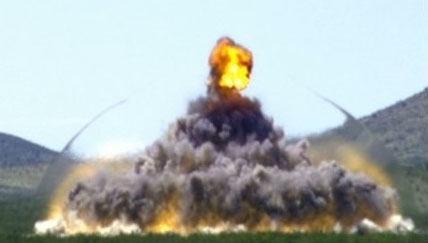In physics, a shock wave (also spelled shockwave), or shock, is a type of propagating disturbance. When a wave moves faster than the local speed of sound in a fluid, it is a shock wave. Like an ordinary wave, a shock wave carries energy and can propagate through a medium; however, it is characterized by an abrupt, nearly discontinuous change in pressure, temperature and density of the medium. In supersonic flows, expansion is achieved through an expansion fan, also known as a Prandtl-Meyer expansion fan. Wikipedia, Shock Wave

Invalid YouTube URL provided

See Also
Compression Wave
Compression Wave Velocity
Figure 8.1 - Russells Painting of Wave Form Dynamics
Figure 8.14 - Some Basic Waveforms and their constituent Aliquot Parts
Figure 8.2 - Compression Wave Phase Illustration
Figure 8.3 - Coiled Spring showing Longitudinal Wave
Figure 8.4 - Transverse Wave
Figure 9.11 - Compression Wave with expanded and contracted Orbits
Figure 9.9 - Wave Disturbance from 0 Center to 0 Center
In the Wave lies the Secret of Creation
Longitudinal Wave
Nodal Waves
Pseudo Velocity Shock Spectrum
Standing Wave
Standing Waves
Table 12.02.01 - Wavelengths and Frequencies
Three Main Parts of a Wave
Transverse Wave
wave
Velocity of Sound
3.9 - Nodes Travel Faster Than Waves or Light
8.3 - Conventional View of Wave Motion
8.4 - Wave types and metaphors
8.5 - Wave Motion Observables
8.6 - Wave Form Components
9.2 - Wave Velocity Propagation Questions
9.30 - Eighteen Attributes of a Wave
9.34 - Wave Propagation
9.35 - Wave Flow
12.05 - Three Main Parts of a Wave
